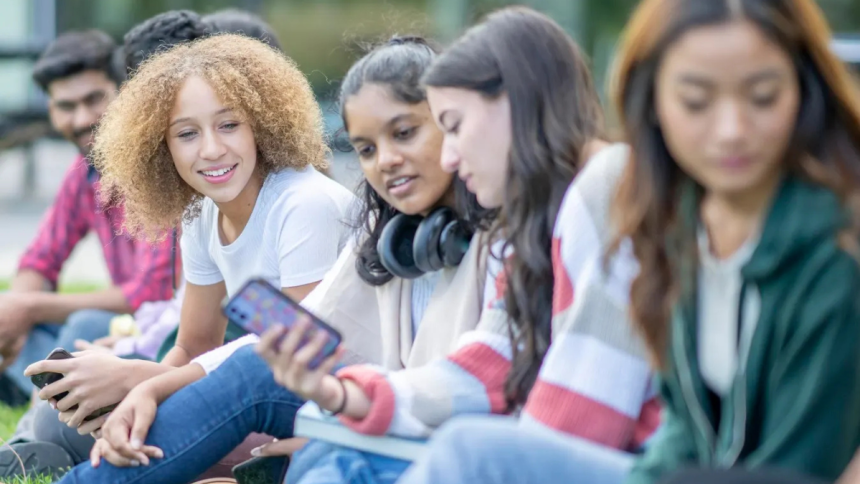Emotional literacy our ability to recognize, understand, and express emotions has never been more important, or more overlooked. We live in a world where most of our communication is digital, and despite being constantly “connected,” we often miss the emotional cues that come so naturally in person. We text instead of talk, scroll instead of share, and read between lines that don’t always exist.
In this shift to digital-first interaction, something subtle but essential has been lost: the tone of voice, the warmth of a smile, the pause before a word. These are the things that give communication its depth, and they’re the building blocks of emotional intelligence. And yet, in the rush for convenience, they’ve been pushed aside.
But something is shifting. Video messaging once seen as clunky or reserved for special occasions is finding its way back into our lives in a more spontaneous, emotionally rich way. In the digital age, video messages aren’t just a feature; they’re a bridge to real emotional connection. They’re helping people relearn the language of emotion one face, one voice, one message at a time.
Rediscovering Human Cues
Think about how we learn emotion as kids. It starts with faces. We learn to read our caregivers’ expressions, mimic their tone, recognize what sadness looks like and what joy feels like not through explanation, but through experience. We grow into adults who can sense when someone’s “fine” isn’t really fine, or when silence says more than words.
Now think about how we communicate digitally. A “hey” in a text can mean excitement, indifference, annoyance or all three. There’s no tone. No expression. No context. Emotional misfires are common, and misunderstandings are easy.
That’s why video messaging is quietly becoming one of the most powerful tools in digital emotional literacy. When you receive a short video message, you’re not just reading a thought you’re feeling it. You see someone’s eyes when they say “thank you.” You hear the laughter behind a story. You notice the pause before a tough subject. These cues are essential for real connection. And video brings them back into our daily interactions.
When Communication Becomes Connection
There’s a growing realization that communication is not just about information it’s about presence. And presence, especially in our fast-paced digital spaces, is rare.
Sending a video message to someone even a quick one says more than the words you speak. It says: I took a moment. I wanted to see you. I wanted you to see me. That simple act can soften conflict, deepen appreciation, or make someone feel seen in a way no emoji ever could.
In a work context, a video update can replace a dozen Slack messages and still feel more direct and human. In a personal setting, a two-minute clip from a friend can feel more meaningful than a dozen texts spread over a week. It’s not about being polished it’s about being present.
This is where platforms built for video messaging shine. Reels from Folksee, for example, make the process of recording and sharing short, authentic video messages incredibly simple. There’s no need for editing or staging. You just record, send, and connect. And because the platform is designed with emotion in mind not performance it creates space for sincerity rather than spectacle.
What that leads to is something quietly revolutionary: digital conversations that feel like real ones.
Rewiring the Way We Express Ourselves
One of the most interesting effects of regular video messaging is how it gently trains us to become more emotionally expressive. When you’re on camera even for just a few seconds you naturally become more aware of how you’re feeling. You’re more likely to name your emotions, to soften your tone, to make eye contact. You’re more likely to be kind.
This isn’t about performance. It’s about reconnection with yourself, and with the person you’re speaking to.
In a world where we’re often encouraged to flatten our emotions into neat boxes or hide them entirely for the sake of efficiency, video messages give permission to feel out loud. To say, “I miss you,” or “I’m nervous,” or “I’m proud of you,” and let those words land with full presence. This kind of expression fosters emotional literacy, not just in the speaker, but in the listener too.
Because the more we see and hear each other, the better we understand each other. And understanding is the first step toward empathy.
Teaching the Next Generation to Feel
For younger generations growing up with smartphones as their primary tool for communication, emotional literacy is not guaranteed. Many teenagers today are more comfortable expressing themselves through memes than through direct conversation. And while that’s not inherently bad, it can leave emotional nuance underdeveloped.
That’s why introducing tools like video messaging into their communication routines is more than a digital upgrade it’s an emotional one. It gives them practice in self-expression, in being seen, in listening closely to others. It teaches them that not all messages are created equal and that sometimes, the best messages are the ones you say with your whole self.
Platforms that make this kind of interaction easy, intuitive, and low-pressure are playing a bigger role in social learning than we might realize. They’re helping people of all ages discover that it’s not about how perfectly you say something it’s that you said it, fully present and from the heart.
Research by Harvard University shows that developing emotional and social skills early significantly improves communication and empathy later in life.
A More Human Internet
The internet was supposed to connect us. And in many ways, it has. But connection without emotional literacy is like having a conversation with the lights off you hear things, but you don’t really see each other.
The rise of video messaging, especially when powered by thoughtful design and platforms like reels, is helping flip the lights back on. It’s reminding us that we don’t need to be influencers or creators to be seen and heard. We just need to speak as ourselves. And we need to make space for others to do the same.
In doing so, we slowly build a more human internet one where emotion isn’t a byproduct, but the main feature. One where digital interaction doesn’t numb our sensitivity, but enhances it. One where we don’t just communicate we connect, with clarity, sincerity, and heart.
Because in the end, emotional literacy isn’t just a personal skill. It’s a collective one. And every video message we send is a small act of rebuilding that shared emotional fluency, one voice at a time.
Lynn Martelli is an editor at Readability. She received her MFA in Creative Writing from Antioch University and has worked as an editor for over 10 years. Lynn has edited a wide variety of books, including fiction, non-fiction, memoirs, and more. In her free time, Lynn enjoys reading, writing, and spending time with her family and friends.















